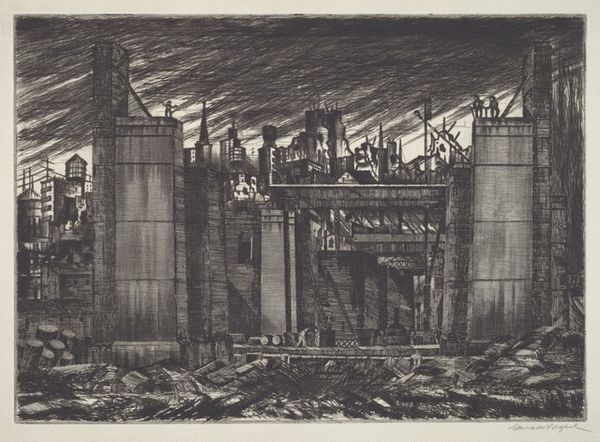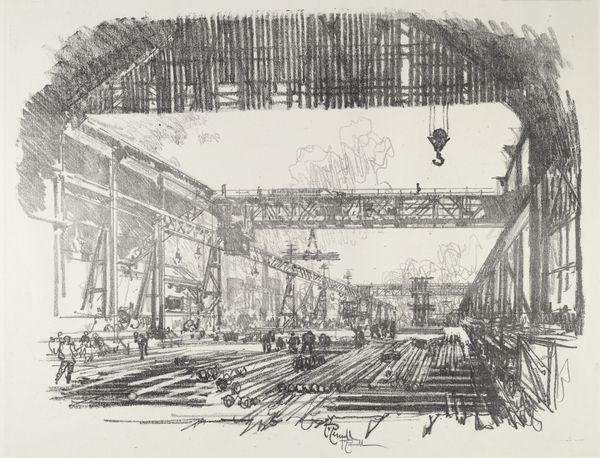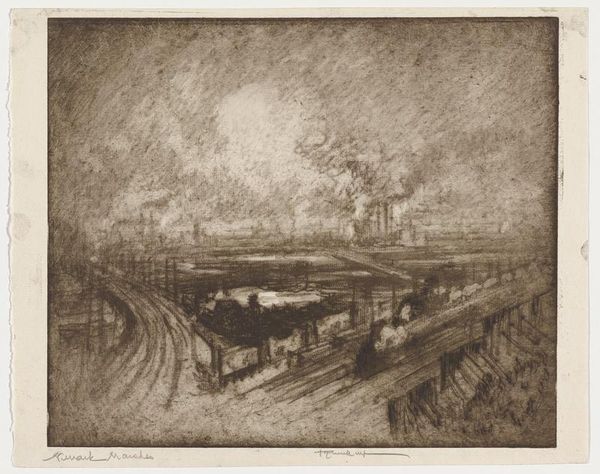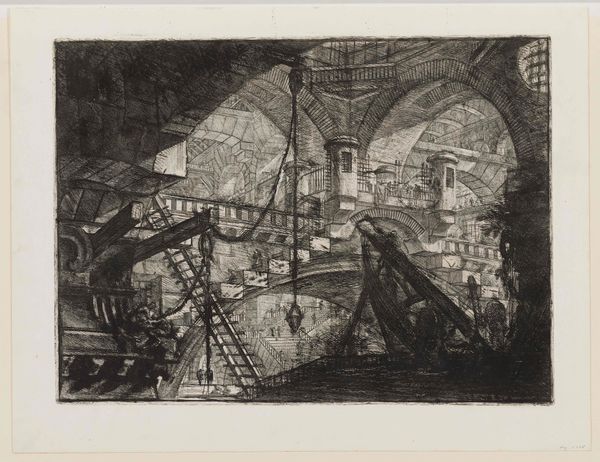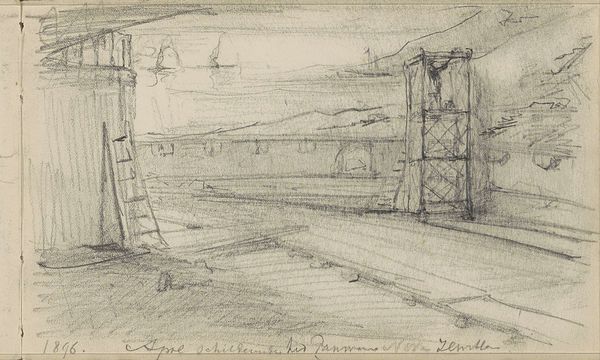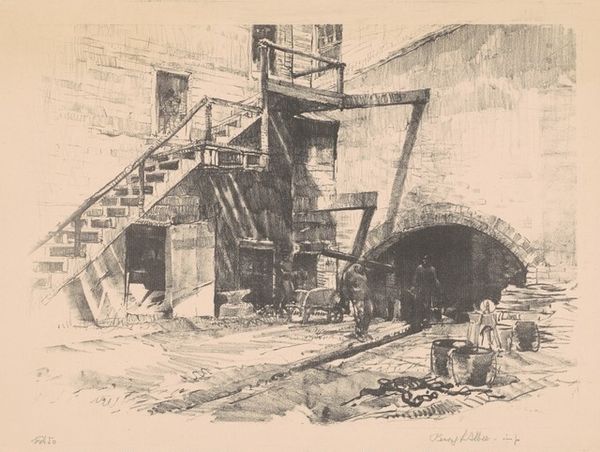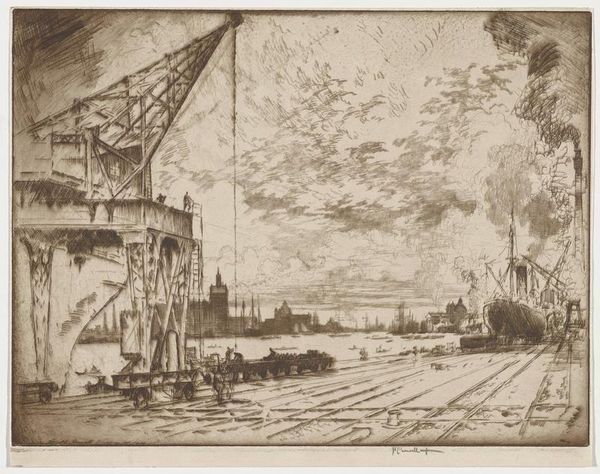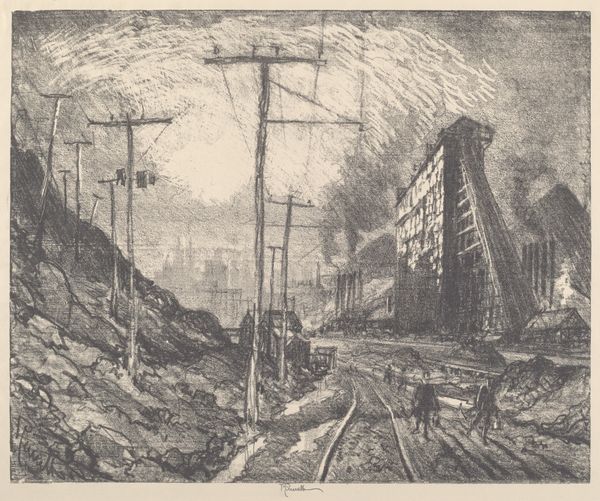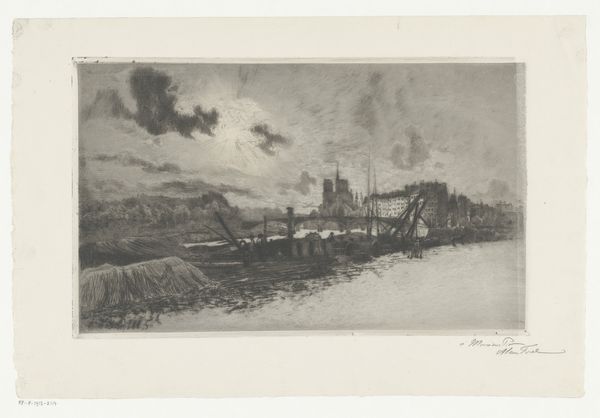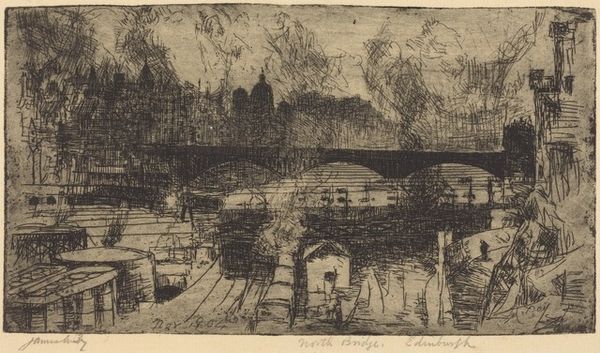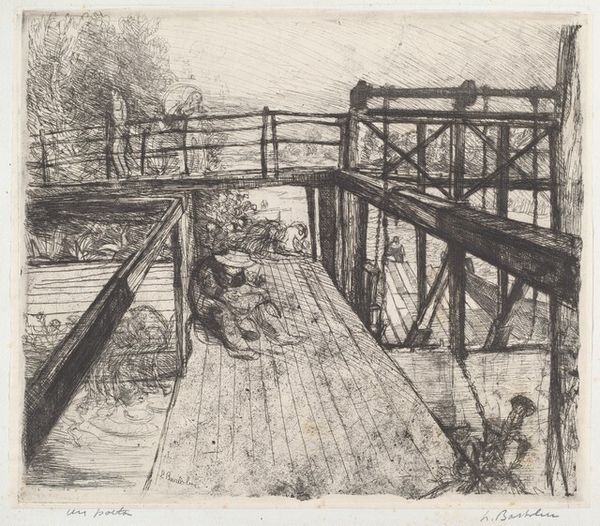
Dimensions: 5 3/16 × 10 3/16 in. (13.18 × 25.88 cm) (plate)6 1/2 × 11 in. (16.51 × 27.94 cm) (sheet)
Copyright: No Copyright - United States
Curator: Here we have Charles Heyman's "Les chemins de fer," created around 1912. This print, an etching actually, resides here at the Minneapolis Institute of Art. Editor: Right away, I'm struck by the grittiness. It's a scene thick with industry, soot almost visible hanging in the air. The tangle of train tracks and bridges, all rendered in this delicate etching style—it's quite evocative, almost romantic in its depiction of the modern world. Curator: Yes, the railways held great symbolic weight during this era, representing progress, connection, and the transformative power of industry, but there's a duality present as well. They could also stand for disruption, the displacement of older ways of life. The trains themselves are more than a simple mode of transportation; they mirror cultural change and anxiety. Editor: I see what you mean. There's a somberness to the palette; sepia and grey underscore that melancholy you mention. Yet, there's also something deeply compelling about watching progress march onward, for good or ill. Do the figures near the bottom suggest anything? They seem so indistinct... Curator: It's curious isn’t it? They are not detailed at all but that actually fits in with the message. Individuality fades amidst the vast, impersonal force of industry. A mass of similar-looking figures near this mighty industry might denote them as labor class, the figures blending into the industrialized landscape. Editor: A world transformed, whether we want it to or not! I also get the sense that the image does something with the geometry; leading us along all the lines, like following a path into the heart of that transition. Curator: The technique really enhances this effect of geometric progression. The etching emphasizes the lines of progress but, equally, exposes some sense of emptiness that we struggle with in an era of technological advancement. It prompts us to examine the consequences that come with industrial transformation. Editor: This industrial, melancholy beauty truly holds you in place as it also propels you forward into change and disruption. Thank you, Heyman, for sharing that complex visual message. Curator: It's a striking visual poem about modernity, isn’t it? A glimpse into the past that still speaks to our present anxieties and hopes.
Comments
No comments
Be the first to comment and join the conversation on the ultimate creative platform.


